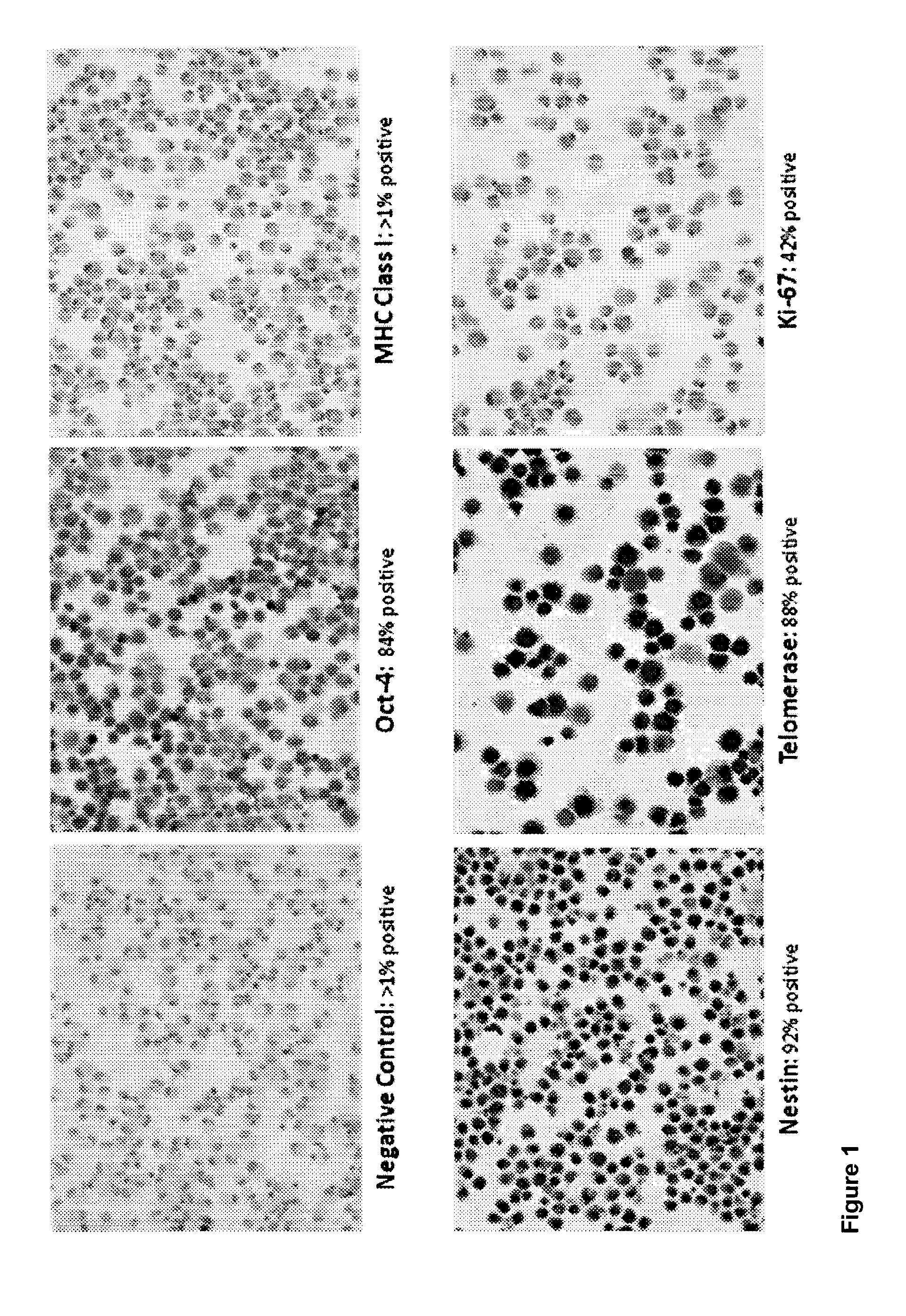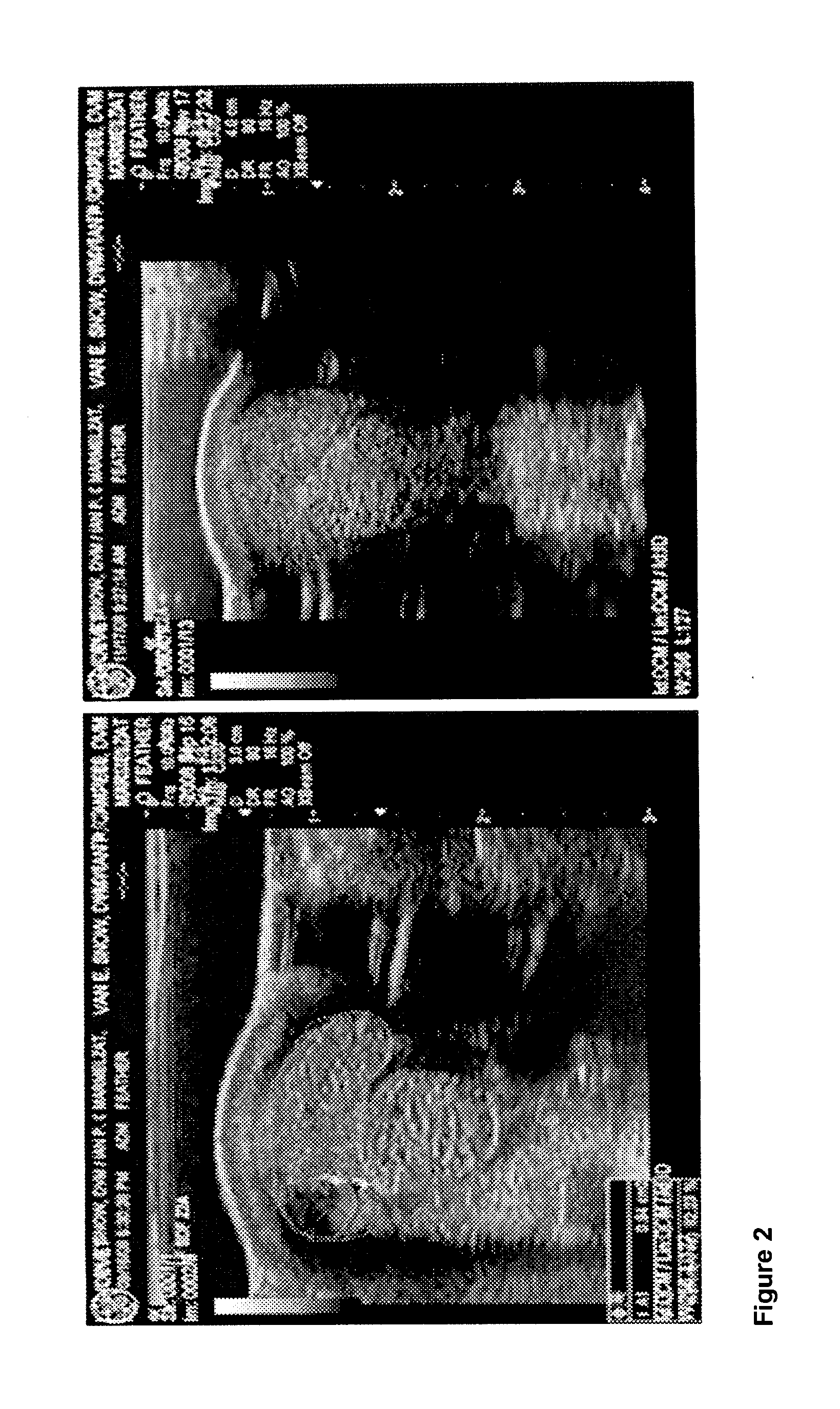Stem cells for musculoskeletal tissue repair
- Summary
- Abstract
- Description
- Claims
- Application Information
AI Technical Summary
Benefits of technology
Problems solved by technology
Method used
Image
Examples
example 1
Preparation of Progenitor Cells
[0124]The preparation of brain-derived pluripotent stem cells (BPC) is described in U.S. patent application Ser. No. 11 / 002,933, published Jun. 2, 2005 as publication number US2005-0118561. These same preparations, initially characterized as BPC, were later determined to have features and express markers associated with pluripotent cells. The BPC were derived from the telencephalon (T lines), mesencephalon (M lines) or whole fetal brain (B lines). Due to little or no differences observed between T, M and B lines, separate cultures for T and M lines proved unnecessary and cultures have henceforth been prepared using whole brain.
[0125]This example describes the preparation of cells from equine fetal brain. Subsequent studies have shown that the same preparation and culturing techniques are successful when used with fetal canine brain. Those skilled in the art will appreciate that the same techniques could likewise be adapted for use with other species, i...
example 2
Characterization of Source Tissue
[0127]Stem cells were obtained from a horse fetus. The fetal tissue was dissected under sterile conditions in Hanks Balanced Salt Solution (HBSS) supplemented with Gentamycin and Fungizone. After multiple washes (at least ten times in anti-microbial and anti-fungal HBSS), the tissue was minced with microscissors under a dissecting microscope in a laminar flow hood (Thermo Scientific, Fisher) and then triturated with sterile fire-polished Pasteur pipettes until a single cell suspension was obtained. Cell counts were performed using a hemocytometer. Cells were cultured in an incubator (Thermo Scientific, Fisher), approximately 10,000,000 cells per flask, for one week to confirm that there was no apparent contamination, as determined by examination under a light microscope. Samples of the cell culture were sent to an outside laboratory for karyotyping, and for genetic, microbial and viral screening. If results were negative, cell cultures remained in th...
example 3
Dosage & Transportation of the Cells
[0133]Stem cells are counted and repackaged in an optimal dose of 1.2 million cells / 2 mL of proprietary culture medium for transportation. The amount of cells has been validated as optimal in our pilot clinical study in soft tissue injuries. Vials with stem cells are packaged with ice packs in a STYROFOAM™ container and shipped to the veterinarian for delivery within 24 hours.
[0134]The optimal dose for most injuries is 1.2 million cells, and will be referred to by that number throughout this application. The dose of 1.2 million cells is designed to allow for retention of about 1 million cells after some cells are lost in transport. Viability tests have shown that about 85% of the cells remain viable at 48 hours after coast-to-coast transport via overnight delivery in a STYROFOAM™ cooler. However, the final dose is always to be determined by the nature of the injury and the veterinarian. See Example 14, below, for description of improved transport ...
PUM
 Login to View More
Login to View More Abstract
Description
Claims
Application Information
 Login to View More
Login to View More - R&D
- Intellectual Property
- Life Sciences
- Materials
- Tech Scout
- Unparalleled Data Quality
- Higher Quality Content
- 60% Fewer Hallucinations
Browse by: Latest US Patents, China's latest patents, Technical Efficacy Thesaurus, Application Domain, Technology Topic, Popular Technical Reports.
© 2025 PatSnap. All rights reserved.Legal|Privacy policy|Modern Slavery Act Transparency Statement|Sitemap|About US| Contact US: help@patsnap.com



